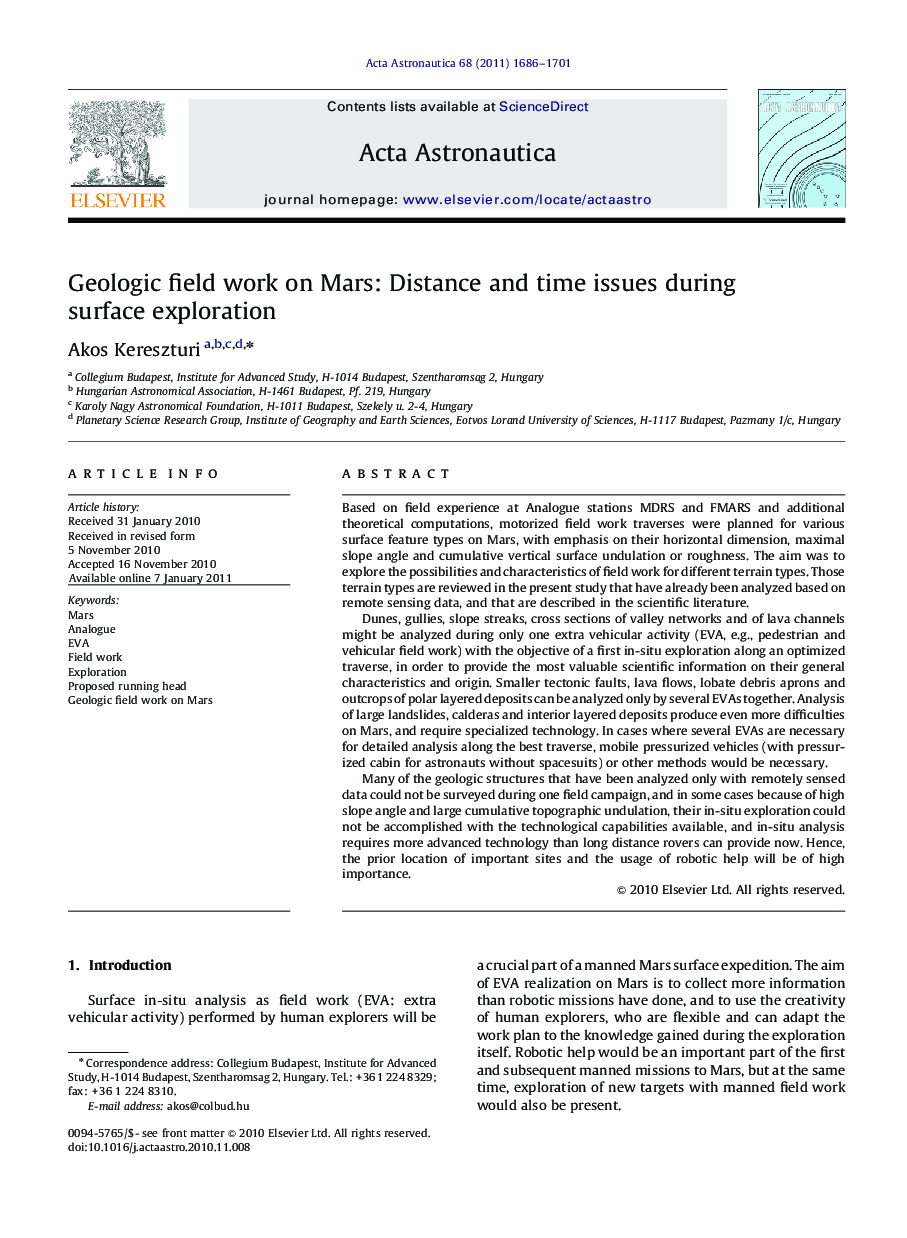| کد مقاله | کد نشریه | سال انتشار | مقاله انگلیسی | نسخه تمام متن |
|---|---|---|---|---|
| 1715669 | 1519985 | 2011 | 16 صفحه PDF | دانلود رایگان |

Based on field experience at Analogue stations MDRS and FMARS and additional theoretical computations, motorized field work traverses were planned for various surface feature types on Mars, with emphasis on their horizontal dimension, maximal slope angle and cumulative vertical surface undulation or roughness. The aim was to explore the possibilities and characteristics of field work for different terrain types. Those terrain types are reviewed in the present study that have already been analyzed based on remote sensing data, and that are described in the scientific literature.Dunes, gullies, slope streaks, cross sections of valley networks and of lava channels might be analyzed during only one extra vehicular activity (EVA, e.g., pedestrian and vehicular field work) with the objective of a first in-situ exploration along an optimized traverse, in order to provide the most valuable scientific information on their general characteristics and origin. Smaller tectonic faults, lava flows, lobate debris aprons and outcrops of polar layered deposits can be analyzed only by several EVAs together. Analysis of large landslides, calderas and interior layered deposits produce even more difficulties on Mars, and require specialized technology. In cases where several EVAs are necessary for detailed analysis along the best traverse, mobile pressurized vehicles (with pressurized cabin for astronauts without spacesuits) or other methods would be necessary.Many of the geologic structures that have been analyzed only with remotely sensed data could not be surveyed during one field campaign, and in some cases because of high slope angle and large cumulative topographic undulation, their in-situ exploration could not be accomplished with the technological capabilities available, and in-situ analysis requires more advanced technology than long distance rovers can provide now. Hence, the prior location of important sites and the usage of robotic help will be of high importance.
Journal: Acta Astronautica - Volume 68, Issues 11–12, June–July 2011, Pages 1686–1701